The second quarter of the year, as I'm sure we're all presently aware, tends to be when game releases start to pick up again. Whether this is due to everyone emerging from the winter slump full of piss and vinegar or just dumping all their figurative jetsam overboard days before the end of the fiscal year, we're usually in for some interesting releases in either case. In Japan, it seems the Spring Rush is less pronounced: were we to chart the number of SNES games released per month on a line graph, we would see a nadir around the April-June quarter. May saw the fewest new releases of the year overall with 19. I mean, that still seems like a lot of releases for a single console in a single month in this day and age, but then these new consoles aren't really the phenomenon that the Super Nintendo was.
Despite the slim pickings for this quarter, we still have a few gems and curios to highlight in this period. There's more than enough excellent, terrible and obscure Super Nintendo (and Super Famicom) games from the middle of 1994 to peruse today.
(I'll stick my usual disclaimer here that while I checked every one of these pages for errors and missing content, I was not responsible for the vast majority of the work that went into them. Each page's list of editors who made the largest contributions should give you some idea of how much or how little I actually needed to do to ensure it was complete, or at least sufficiently filled out.)
(Oh yeah, and I should say that the first part of the Super '94 Wiki Project is over here, and the previous year's Super '93 Wiki Project can be found here.)
April
April saw thirty releases between the SNES and Super Famicom (not including games that came to one region after being released in another) including one of the most well-regarded Super Nintendo games of all time - as well as one of the worst. Considering we only saw the release of Super Metroid in the previous month, Spring really set the bar high for the rest of the year.
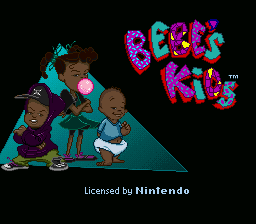 | Bebe's Kids: Perhaps the most notorious Super Nintendo game of all time, Bebe's Kids was a 1992 animated comedy based on recurring stand-up routines of the unfortunately short-lived Robin Harris, usually involving playing nice with the kids under a single mom's care in order to get closer to the mom despite the fact that the kids were rambunctious terrors that hardly made it worth the trouble. While not particularly successful, the movie did well enough to spawn this licensed brawler game, and oh boy. Brawlers were starting to turn a corner in the Arcade and home console market, having been supplanted by Street Fighter II and Mortal Kombat and other one-on-one fighters, but even if this game came out at the genre's late-80s Double Dragon/Final Fight peak it would've still been reviled as barely playable garbage. At least it wasn't a licensed platformer? |
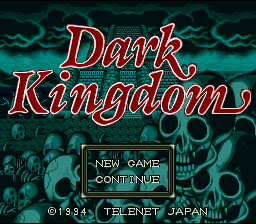 | Dark Kingdom: A SFC-only JRPG that flips the script and has the player assume the role of an evil henchman. Each chapter of the game is episodic, starting the player in the immense and foreboding citadel of his evil superiors and eviller deity and having him go off on missions to terrorize the peaceful folk and quell the sort of heroic rebellions that would normally be the focus of games like this. Like similar cases of "playing as the bad guy" games, such as Overlord, Dungeon Keeper or Wizardry IV, much of the game's combat is spent directing one's minions, recruiting new powerful monsters as the previous get killed or rendered obsolete. Dark Kingdom has nothing to do with either Dark Law or Dark Half (two other unusual SFC JRPGs of some acclaim); people just like putting Dark in the titles of games. |
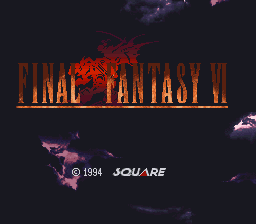 | Final Fantasy VI: (Or Final Fantasy III US). One of the greatest JRPGs of all time, for any system. I probably won't need to go into too much detail about Terra "Terror Baltimore" Branford's and Celes Chere's journeys through a world that is first threatened by destruction at the hands of an irresponsible power-hungry empire and then subsequently destroyed despite the heroes' best efforts, as they desperately survive in the monster-infested post-apocalyptic landscape that remains. It's a truly immense effort, pushing what the SNES could do to its very limits, and sets the stage for the equally ambitious Final Fantasies to come in the following generation and after. |
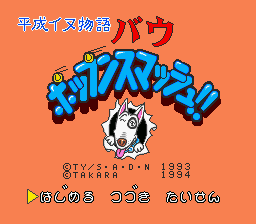 | Heisei Inu Monogatari Bow: Pop'n Smash: While I have zero familiarity with the manga/anime this is based on - a comedic slice of life manga about a dog that is recruited by a loving family connected to the Yakuza - there was something awfully familiar about the game itself. Heisei Inu Monogatari Bow (or "Bow's Modern Dog Story") Pop'n Smash is a clone of the Sanrio World Smash Ball competitive air hockey-esque game all duders know and love after its frequent appearances on UPF and other livestreams. Heisei Inu Monogatari Bow appears to have a few additions to help set it apart, including power-ups that serve to greatly unbalance the game (one even removes all the defensive blocks in front of their opponent's goal!) and the ability to choose which "club" to use, including a mallet and a tree branch. A little shameless of toy creators Takara and whatever mystery contract developers they hired to create it, but maybe they didn't expect anyone would notice? |
 | Knights of the Round: The memorable Arcade brawler based around Arthurian legend with a title that appears to be missing a word is one of Capcom's better SNES conversions, learning a lesson from their coldly-received Final Fight conversion by actually making this one two-player. Of course, the original allowed up to three players to play cooperatively, but let's not get too greedy. |
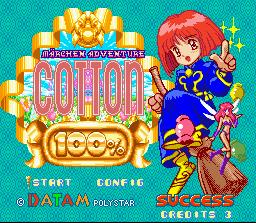 | Marchen Adventure Cotton 100%: One of those games that regularly makes "here's some Super Famicom games you should seek out" lists, Cotton 100% is a sequel to (or remake of) the TurboGrafx-CD witch "cute 'em up" Fantastic Night Dreams: Cotton and plays a little like Konami's TwinBee games (only horizontally instead of vertically) in that the player can shoot at gems dropped by enemies to change their colors and give themselves power-ups. It's a bright and cartoonish game that takes full advantage of the Super Nintendo's vibrant color palette. |
 | Rocko's Modern Life: Spunky's Dangerous Day: Perhaps the one Nickelodeon show that felt a little too subversive, cynical and quotidian to lend itself well to a video game adaption (I mean, unless Telltale wants to take a shot at it...). That's possibly still the case with this frantic puzzle-platformer, in which Rocko has to protect his profoundly unintelligent dog Spunky from harm by removing obstacles in his way ahead of time (a bit like Sleepwalker, or Mario & Wario). It almost feels like it was based on the show's busy intro than anything else. There's a reason for this: the show hadn't even started airing when Nickelodeon commissioned the game, and the artists and designers only had sketches and draft scripts to work with. Not the trainwreck it could've been, but definitely not a classic SNES staple either (and not a patch on the excellent show, which pulled the same "it's really for grown-ups" trick Ren & Stimpy did only with a lot more subtlety). |
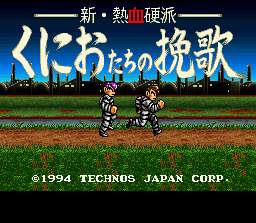 | Shin Nekketsu Kouha Kunio-kun: Kunio-tachi no Banka: Kunio-kun visited the States a couple times, leaving behind cult favorites like Renegade, Super Dodge Ball and River City Ransom before disappearing back to Japan forever. Kunio-tachi no Banka is a 1994 entry in the "core" Kunio-kun series, which involved him and his buddy/rival Riki running around Japan beating up delinquent students and other street toughs to prove their superiority (and/or save their girlfriends, who can take care of themselves in this game and act as secondary playable characters). It seems a little more serious than other Kunio-kun games, with realistically-proportioned characters (instead of RCR's "chibi" Alex and Ryan) and a darker plot concerning Kunio and Riki breaking out of juvie to hunt for the doppelgangers that framed them for a hit n' run. |
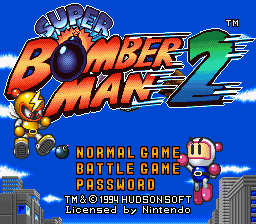 | Super Bomberman 2: I couldn't say if 2 was the best of the five (!) Super Bomberman games Hudson produced for the Super Nintendo, but it's the one I spent the most amount of time with as a kid. The story mode, which has the now familiar routine of a group of Mega Man-style "evil masters" with thematic superpowers arrive in orbit over Planet Bomber to cause a ruckus, only for the White (and Black) Bomber to spring to their planet's rescue. The multiplayer mode is the highlight however, with a mode that allowed the previous game's winner to start every round in a subsequent game with a golden sheen and a permanent power-up (or the geta booby prize, which slowed them down). The game also had its fair share of weird gimmick boards for the multiplayer, causing no end of friendly multiplayer abuse. |
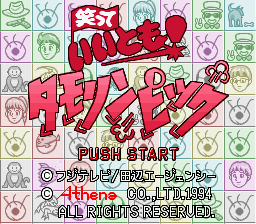 | Waratte Iitomo! Tamorinpic: My pick for weirdest game this month. Waratte Iitomo! ("It's OK to Laugh!") was Japan's longest-running variety show (1982-2014!) with guests and interviews and a whole lot of daft skits courtesy of the shades-wearing comedian host Tamori. This party game has the players recreate a lot of the skits from or inspired by the show, performing mini-games like clapping to cues based on Tamori's goofy poses and bowling with a pool cue and cueball. It supports up to four players, but the mini-games themselves could only support two at once so they would go in pairs. It's an interesting execution of a license that wouldn't traditionally be thought of as video game adaptable. |
Honorable Mentions: I've got a few games here that didn't seem significant enough to make the top ten list, but are definitely remarkable in their own way. Ranma ½: Chougi Ranbu Hen is the latest SFC game based on the Ranma ½ franchise, and another one-on-one fighter like Ranma ½: Hard Battle. It introduces Mariko Konjo: a "valley girl" combatant whose martial art style is based on cheerleading. Shien's Revenge is an entire game seemingly built around that on-rails bonus stage from the original Shinobi, in which you have to take down hordes of incoming ninjas with a stack of shuriken in a first-person view. Shien also allows the use of a close-combat knife, which has to be clicked-and-dragged across screen to connect with enemies and defeat them. Finally, Yume Meikyuu: Kigurumi Daibouken ("Dream Labyrinth: Kigurumi's Big Adventure") appears to be an Eye of the Beholder/Wizardry style first-person dungeoncrawler in a series of dungeons made out of cake. I really couldn't make head nor tail of it, but it looked delicious.
May
May's always been one of the leanest months for Super Nintendo releases. Excepting the small scattering of releases in 1990 and 1991, before third-party developers really latched onto the system, May had the second-lowest number of releases in 1992, the least in 1993, the least in 1994 and (spoilers) the least in 1995 and 1996. (After 1996, there'll be barely any releases for any month.)
I'm not quite sure why this is, considering that May is a month with the maximum 31 days and starts with a week-long holiday in Japan perfect for playing new video games. (At least it's sort of one holiday, anyway. If you recall the Persona 4 ER (or just from playing the game) they refer to the first week of May as Golden Week: a period of around seven days when about five different consecutive national holidays happen, so people just take the whole thing off for a vacation.) I can only imagine it's the aforementioned "end of the fiscal year" thing that leaves the following month bereft of content.
 | Crayon Shin-Chan 2: Dai Maou no Gyakushu: The second Crayon Shin-Chan SFC game is a little more out-there with random superheroes and a bunch of regular characters transformed into monsters, and as a result it more closely resembles an actual video game than the weird brawler the first game was. If you've seen the FUNimation dub, you'll know that despite being a slice of life comedy about a mischievous kindergartener, it's got quite a subversive and adult sense of humor. A bit like last month's Rocko's Modern Life, even. |
 | Drift King Shutokou Battle '94: It's a racing game based on illegal Tokyo street racing, the sort of thing that would be the focus of Initial D and that one early Fast and the Furious movie people seemed to like. The eponymous Drift King is famous pro racer Keiichi Tsuchiya, who got his start in street racing, and who also endorses the game despite the fact it's full of illegal street driving. No, I'm not sure if that's really allowed either. While it took a few years to arrive in the US and Europe, this series would become better known in the Dreamcast/PS2 era as Tokyo Xtreme Racer. |
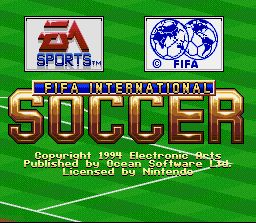 | FIFA International Soccer: I generally don't care for soccer games, at least I don't any more now that they've gotten way too simmy, but FIFA International Soccer would become the first game in perhaps the biggest soccer series in the world. Pro Evo might still outshine it, depending on the year, though I'm not so sure Konami will endeavor to keep it (or, indeed, any of their video game properties) going for much longer. The original FIFA was an isometric affair and contained all the amenities that EA Sports were known for, making the game easy to pick up and play even if you had no soccer experience whatsoever. |
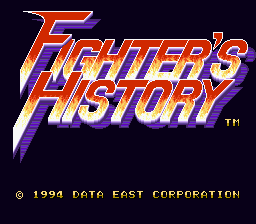 | Fighter's History: Data East's incredibly overt take on the genre Street Fighter II almost single-handedly created, forgetting to sufficiently distance its familiar cast of global combatants from the model it was clearly aping. Capcom actually took Data East to court over this game due to its myraid similarities with their own Arcade hit, and when Capcom lost because Data East had stopped just shy from actually cloning the game and putting a new title on it (the case referred to "scénes á faire", which is a fascinating concept in copyright law), it opened the doors to every minor studio who wanted in on this new Arcade phenomenon but didn't have the creativity to go beyond changing the Chinese girl's clothes from blue to red. |
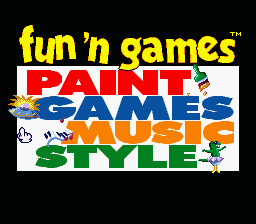 | Fun 'N Games: While it's a fairly innocuous mini-game collection intended for younger children, it's also the only other SNES game I'm aware of besides Mario Paint that has a suite of music and drawing tools compatible with the SNES Mouse. Fun 'N Games is the lesser of the two for sure, and the additional game modes aren't anything to write home about, but I'm surprised we didn't see more software like it. Usually everyone falls over themselves to copy whatever it is Nintendo just developed. The game was also available for the Genesis and 3DO, which I'm sure saw even fewer user-creativity focused games like this. |
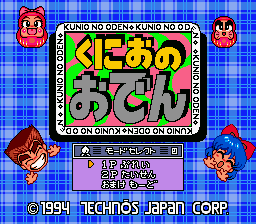 | Kunio no Oden: We have a second sighting of Kunio-kun in as many months, this time taking part in an oden puzzle game. Oden is a nourishing Japanese stew with a whole bunch of disparate ingredients that tends to get eaten on street corners when the weather's cold. The game uses each of these ingredients as separate pieces (sort of like the different-colored viruses/beans in Dr. Mario and Super Puyo Puyo) and builds a falling block puzzle game around them. It seemed fairly Columns-ish from what I played, though there was an added wrinkle where chopsticks would come down occasionally and fix ingredients into place, making them harder to clear. It also has a whole lot of super deformed Kunio-kun action going on around the borders, which made it seem a bit like Super Puzzle Fighter 2 Turbo. |
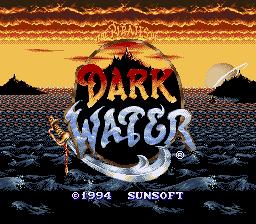 | The Pirates of Dark Water: I can barely recall this show. I think it was one of the last gasps of a TV animation industry built around surreal, single-sentence concepts that sounded as cool as possible ("pirates on an alien planet!") in order to sell toys. As might be expected, it's another brawler that roughly follows the plot of the show and is based on the increasingly familiar system of having three characters of a "strong and slow", "fast and weak" and "well rounded" bent. It's no Skeleton Warriors, that's for sure. |
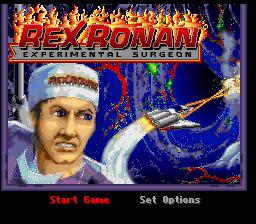 | Rex Ronan: Experimental Surgeon: Everyone remembers the well-intentioned yet completely terrible 1992 edutainment game Captain Novolin, a brawler designed to teach children about diabetes with a superhero so strong that he falls into a coma every time he touches a donut (a bit like the invincible Captain Planet and the way he'd fall over helpless once near any factory smoke, crude oil, improperly recycled trash or Hitler's pure hatred), but fewer recall the miniaturized adventures of Rex Ronan as he attempts to remove the cancer of a tobacco industry bigwig. Meanwhile, the same tobacco company attempts to kill Rex with microscopic robots in order to protect the big secret that cigarettes are actually kinda shitty for you. The game, published by the same health-conscious thinktank behind Captain Novolin, was unambiguously designed to teach kids about the dangers of smoking, really rubbing in how much damage nicotine and tar can do to the human body with its generic Fantastic Voyage plot. Be sure to stay tuned for the next two games in this series, starring diabetic elephants and asthmatic dinosaurs respectively. |
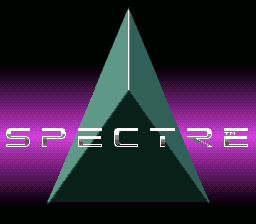 | Spectre: Due to an ongoing fascination with 3D vector graphics in the 70s and beyond, we occasionally saw stark, blocky visual design in games like the Macintosh Battlezone-clone Spectre and in movies about lawnmowing because they seemed super cool and futuristic, despite the fact that nothing looked like anything besides geometry homework. Spectre got a Super Nintendo port, presumably as its Mode 7 could recreate most of the original's state-of-the-art blobs and shapes, and in spite of its simple, repetitive gameplay Spectre was highly regarded at the time for its technological advances. At least it's better than Rise of the Robots. |
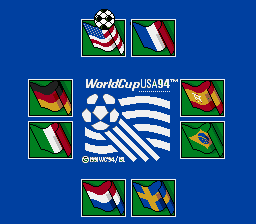 | World Cup USA 94: Amusingly, there were a few soccer games based on that year's World Cup that were in development long before any teams could be confirmed as qualifying. As such, this and the following month's Elite Soccer hedged their bets on a lot of safe gambles. Oops. Not only did many of the national teams that the game banked on failed to qualify, but it also meant that a lot of surprise qualifiers didn't even get represented in-game. This actually happened with another soccer game too, four years prior: World Championship Soccer (a.k.a. World Cup Italia '90) grossly underestimated the chances of various major soccer nations, resulting in a list of expected qualified teams that was hilariously off the mark. Just another instance of rushed licensed games running into endless problems. |
Honorable Mentions: It's exceptionally brazen for ClayFighter: Tournament Edition to exist, to suggest that the original game was so serious a fighter that it required a heavily tweaked and balanced version for the 16-bit era's equivalent of EVO. It ended up being almost as broken, for the record, as old bugs were replaced with new ones. Date Kimiko no Virtual Tennis is a generic tennis game that is notable for being one of the few sports games to be officially endorsed by a female athlete, but then tennis is usually the exception to this rule due to photogenic players like Maria Sharapova. ESPN Baseball Tonight, meanwhile, is one of an increasing number of cases where a game was designed for a CD-based system, such as then-modern CD-ROM PCs, the Sega CD or the TurboGrafx-CD, and got ported to the industry leader (that would be the SNES, for a few more months at least) with heavy modifications due to the limitations of the SNES cart and the system's dated tech. The ESPN games relied on the CD-ROM format to play TV and sound clips, which the SNES couldn't effectively do. I mean, the game itself was terrible on any platform, but it wouldn't be much longer until the writing was on the wall for the SNES.
June
June 1994 was a good month for soccer game fans as the 1994 World Cup event went into full swing, with a number of sports game developers attempting to capitalize on the largest event in the sport. This month saw three new soccer games to join the three that appeared the previous month, leaving SNES owners spoiled for choice. Well... those that were way into soccer games at least.
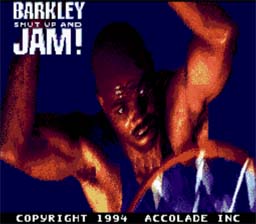 | Barkley: Shut Up and Jam!: The many travails of Sir Charles would be immortalized in the meta parody RPG Barkley: Shut Up and Jam: Gaiden, but a lot of that fan-game's art assets (and general attitude) were taken from this early SNES/Genesis rival to NBA Jam. The game's far less focused on NBA teams and professional basketball, instead moving the action to the inner-city courts with a bunch of colorfully-named personalities. It's apparently a far better game than most people give it credit for. |
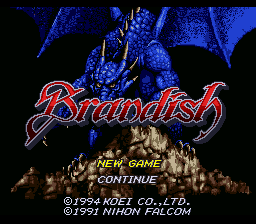 | Brandish: Another of Falcom's staple series, alongside Ys and Dragon Slayer, the Brandish games are a series of top-down dungeon crawlers. The odd way that the camera moves the room around so that the protagonist is always pointing north can be a little disorienting, but it helps to think of these games as first-person dungeon crawlers like Wizardry or Dungeon Master that someone accidentally switched to third-person by pressing the wrong function key. Most Brandish games tend to feature artwork of its pneumatic heroine Dela Delon, even though she's technically a villain in the first game. Unlike the majority of Falcom games at this time (which tended to be Japanese-only PC games) it not only got a SNES conversion, but that same version got localized into English. |
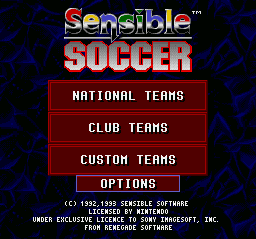 | Championship Soccer '94: Better known to everyone outside of the US as Sensible Soccer, this marked the first appearance of the Amiga soccer nonpareil on the Super Nintendo. Time to get a little inside baseball (or inside soccer, I guess): the first Sensible Soccer, simply called Sensible Soccer or Sensible Soccer: European Champions, was only released on the Amiga, Atari ST and PC (it was fairly easy to port between the three systems) in 1992. With its surprise success, Sensible went about creating a 1993 sequel/update that added a lot of tweaks, updated the rosters and could be converted to every computer, home console and portable system going. The SNES game was named for the original though, being known as Sensible Soccer: European Champions in Europe, so it left us with quite a mess on the wiki to sort out. |
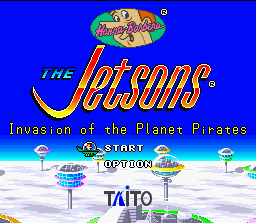 | The Jetsons: Invasion of the Planet Pirates: There's two surprising factoids about this Hanna Barbera licensed platformer. The first is that it's actually not bad: George Jetson has a vacuum-like device that lends itself to a lot of interesting platforming puzzle-solving, such as using the powerful suction to climb up walls and across ceilings as well as throw blocks around to make steps, and the game itself doesn't look half bad. The second is that this is one of a handful of games that would be changed into an anime license game for Japanese audiences, rather than the far more common reverse. In this case, the anime makeover involved the mascot of a Japanese Super Famicom magazine, which commissioned the game's original developers Sting (best known these days for bizarre strategy RPGs like Yggdra Union) to graphically rework a game in their back-catalog to feature their heroine Ruka-chan. I mean, could you imagine the furor if someone took an obscure Japanese game and put Giant Bomb people in it? Insanity. |
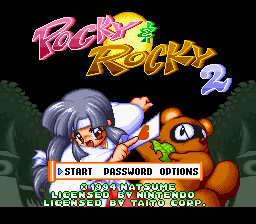 | Pocky & Rocky 2: Konami's continuing adventures of a shrine maiden and a tanooki fighting the forces of darkness. The sequel adds a bunch of new helper characters, if tanookis aren't your thing, and rocks the boat a few times with atypical forced scrolling stages set on top of Chinese dragons and/or dogs. Pocky (Saya-chan) can now team up with the second player for powerful combo attacks, a bit like the Simpsons Arcade game, though the player has to manually turn it off as soon as they start to flash or they'll take damage. It still looks great, plays fantastic as a top-down shoot 'em up with full freedom of movement and is full of that charming crazy Japanese personality that Konami used to do so well. Turns out "crazy Japanese personality" eventually culminates in "fuck video games, we doing spas and pachinko now". |
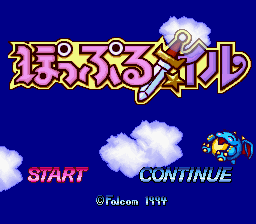 | Popful Mail: Falcom's second entry this month is Popful Mail, a side-scrolling action RPG with a few mild SpaceWhipper elements. If anything, it feels like a combination of Ys III and Legacy of the Wizard, two fairly recent (at the time) Falcom games. The eponymous Mail is a elven bounty hunter who is kind of useless at her job, and eventually teams up with an apprentice wizard and an adorable bat monster to chase down a rogue archmage and save the world. Like the aforementioned Cotton 100%, Popful Mail frequently tops the list of desired Super Famicom imports. Honestly though, it's the Sega CD version that is the more desirable option, due to its CD music, anime cutscenes and the fact that Sega (thanks to Working Designs) bothered to localize it. |
 | Stunt Race FX: 1992's Star Fox was made possible with the Super FX chip: a device that could be placed inside the cart of compatible games that the SNES would use to achieve the necessary graphical power to render multiple polygonal models without exploding. After Nintendo brought in UK devs Argonaut to create the device and co-produced the original Star Fox with them, the Super FX chip wouldn't actually see that much use until 1994/95 with a handful of racing games, including Stunt Race FX. Each of the anthropomorphized vehicles are made of multiple polygons that would twist and stretch whenever the vehicle took damage. Though it impressed critics with its polygonal looks it didn't actually play too well, with controls that were far too squirrelly. |
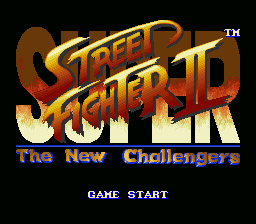 | Super Street Fighter II: Capcom continued to dominate the fledgling fighter scene with regular improvements to their 1991 hit Street Fighter II. These improvements involved speeding up the action and making the four "Grand Master" boss characters (Balrog, Vega, Sagat and M. Bison) playable. Super Street Fighter II saw the first monumental shift to the game, adding four brand new characters and, for the Arcade version at least, a big graphical improvement thanks to Capcom's new CP System II board. Of course, this wouldn't be the definitive version of Street Fighter II: Capcom still had more tweaks to make (and then release as separate games). |
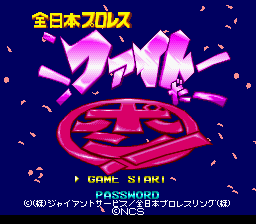 | Zen-Nippon Pro Wrestling: Fight da Pon!: Zen-Nippon Pro Wrestling (or All Japan Pro Wrestling) is one of Japan's biggest circuits, though as a wrasslin' neophyte I couldn't really tell you how popular it is or whether it more closely equates to the WWE or the WCW or whatever other circuits were big in the 1990s. What I can tell you is that this Zen-Nippon game, developed by Natsume and published by Masaya like the four others for the Super Famicom, changed what was a standard 16-bit wrestling game template into some weird cartoony parody with card-based gameplay. It also has a bizarre satirical storyline that I'm sure makes more sense to diehard AJPW aficionados. |
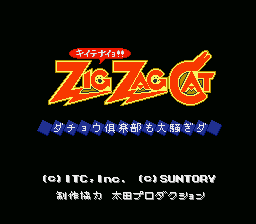 | Zig Zag Cat: Ostrich Club mo Oosawagi da: Zig Zag Cat is what appears to be the merging of a block-busting game like Breakout or Arkanoid (more the latter, since the game features the same power-ups) and a vertical scrolling shoot 'em up. The screen moves constantly upwards, and the player has to maneuver the protagonist around obstacles while also ensuring that their zig-zagging ball (actually a transformed cat, hence the title) remains on the screen. Occasionally, the scrolling will pause so that the player can take out a certain enemy tile that prevents them from moving. There are also interstitial locations to stop and recuperate between stages, as well as providing a bonus area to practice in. It's a strange game, but then developers were always trying to find ways to breathe new life into this once-popular Arcade genre. |
Honorable Mentions: The not-so-honorable mentions today go to: The Ren & Stimpy Show: Fire Dogs, one of many poorly made licensed games to feature John K's incorrigible duo (and was recently featured in an AVGN Christmas short) that starts on the wrong foot with a first stage that is almost impossible to beat in time; Slayers, which is a fantasy JRPG based on an anime/manga that satirizes fantasy JRPGs, which is a decision that was either incredibly meta or incredibly lazy; and Ultima: Runes of Virtue II, a console spin-off of the core series that focuses more on combat and puzzles than the heavy RPG elements the series was known for.
That's it for this Wiki Project update, and for the first half of 1994's SNES release schedule. I should have the next update ready sometime later this Summer if all goes according to plan, and then I hope to be finished with the whole project before November 21st: the twentieth birthday of the Super Famicom. Until then... keep on appreciating the Super Nintendo? Or me, I guess. In fact, do that. Send me money too.
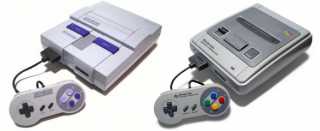
Log in to comment